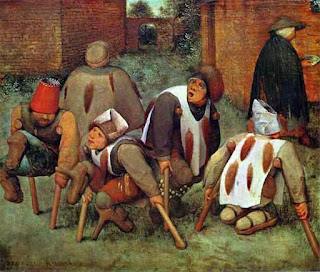Nectan was the oldest child of King Brychan of Brycheiniog, a 5th-century king in mid-Wales who had two dozen children by three wives. Inspired by the legend of the first hermit, St. Anthony, Nectan was determined to adopt an ascetic lifestyle. He left Wales and settled first in a forest at Hartland on the Devon coast, and years later in a remote valley where he built a chapel by a well (see illustration). His siblings were also very religious and interested in converting others to Christianity. Legend says the siblings all gathered at Nectan's place every year on New Year's Eve.
He is also linked to St. Nectan's Glen in Cornwall, near Tintagel, where it is claimed he would stand on the coast and ring a bell during stormy weather to warn ships they were getting too near the rocks. He also helped someone who lost their pigs. After helping find the pigs, Nectan was gifted with two cows. When the two cows were stolen from him, he tried to convert the robbers to Christianity.
The robbers were not having this, so they cut off his head. Nectan's body picked up the head and walked back to his own chapel before collapsing. One of the robbers went mad at the sight, but the other repented and buried the body. We are told (in a 12th-century Life of Nectan) that miracles took place at the gravesite.
Long after his martyrdom, Nectan appeared in a vision to a young man. In 937, on the eve of the Battle of Brunanburh, the soldiers were suffering from plague. In the vision, Nectan appeared and healed the young man with a touch. The next day, the man told King Æthelstan about the vision, and urge him to pray to God for victory. Æthelstan did so, and not only did he win the battle, but also the plague passed away.
The Reformation did away with the trappings of the Nectan shrine, but there are still churches dedicated to him. His feast day is 17 June.
If you clicked on the link about King Æthelstan, you would have seen the title "The Forgotten King." I have mentioned him before, but never gone into his crucial victory at the 10th-century Battle of Brunanburh. I'll tell you more tomorrow.




